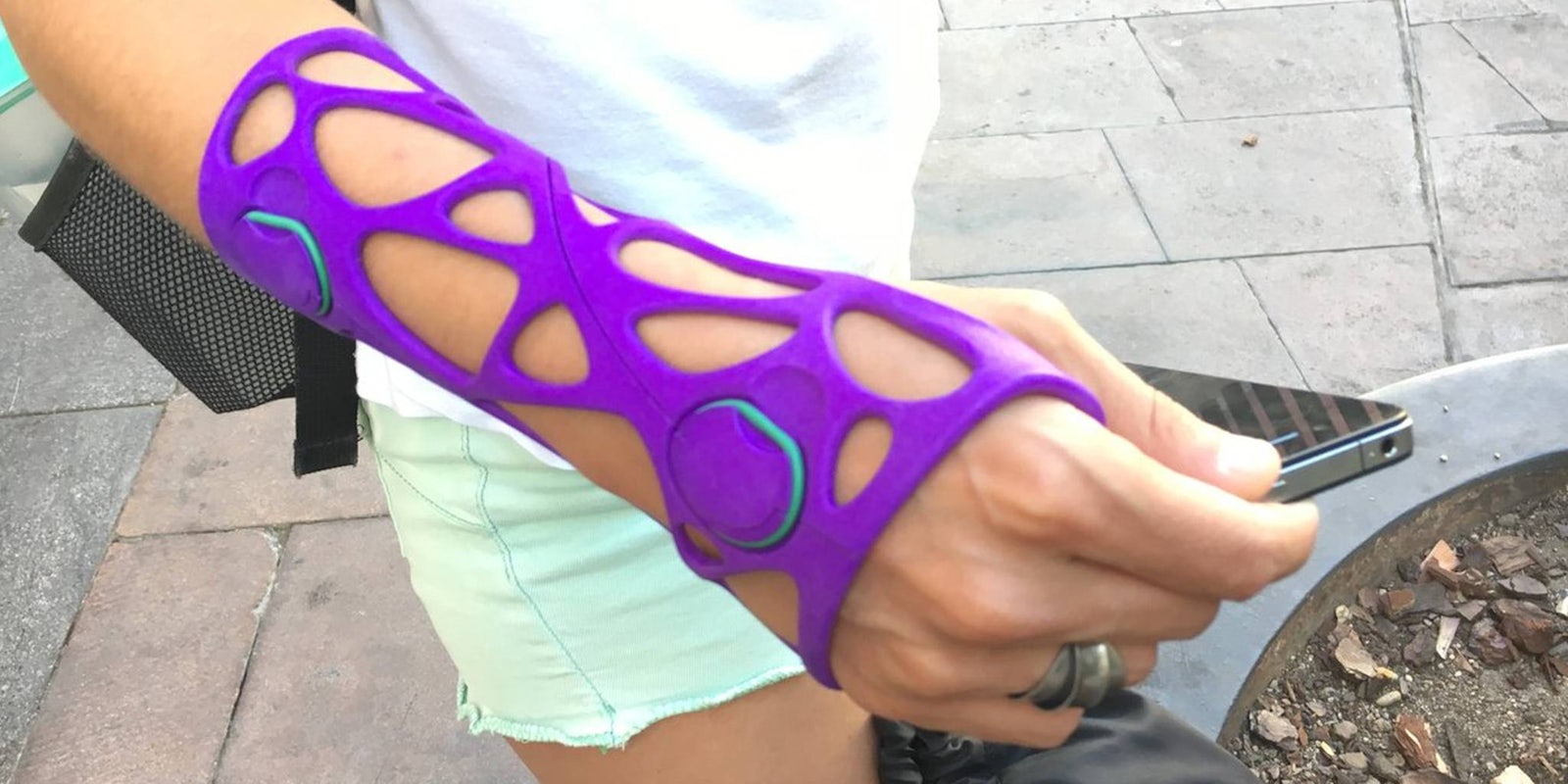Broken bones have been treated with the traditional plaster or fiberglass casts for generations in what has always been thought of as the normal (and very itchy) treatment plan.
But even casts are keeping up with the modern, technologically advanced times.
The new 3D-printed casts are here and far more comfortable than anything plaster. The waterproof casts feature an open-lattice custom design that is made specifically for each patient. Not to mention, they may help the bones heal even faster.
It’s built from a design software program after a scanner collects the broken limb’s specifications, and the cast is then printed in two pieces.
The design itself is lightweight and the plastic features round openings to allow for more breathability. These openings will make it easier for doctors to access the broken limb, as well as making daily tasks more manageable for the patient.
Carol Lin, an orthopedic surgeon at Cedars-Sinai Medical Center, told MIT Technology Review that the design helped with determining skin health, and it made re-dressing wounds easier. This, in turn, would lessen the number of follow-up appointments the patient would have to make.
The catch? They are not exactly cheap.
Although the casts are not yet on the market, they are expected to cost between $200-$500. The ability to use 3D printing in the medical field has allowed procedures to become more individualized, allowing for better surgical planning and treatment options in patients who need prosthetics. But while custom-printing technology is modern and beneficial, it’s far too new to be a cheap option.
The casts may be costly, but the 3D printing industry is just getting started. According to MIT Technology Review, SmarTech Markets projects that the medical market for 3D printing will balloon from $498 million in 2014 to more than $5.8 billion a decade later.
Once the price drops, however, it will become more feasible to explore the possibility of using 3D printing to improve other existing medical products and procedures.
The movement toward 3D-printed medical devices is the subject of many startups around the world. One of these projects includes Mediprint, founded by engineering student Zaid Musa Badwan in Mexico. Mediprint uses advanced technology to create 3D physical replicas of bones and organs from traditional medical imaging. Badwan founded the company in order to manufacture the NovaCast he created with his colleagues.
Xkelet, based in Spain, has also gained recognition for its cast. A recent winner of the Red Dot Design Award, Xkelet is using two patients to test it product, and it will start a clinical trial in September.
Xkelet’s first 3D-printed cast is expected to reach hospitals within the next six months, so it might be best to hold off on breaking any limbs until then.
